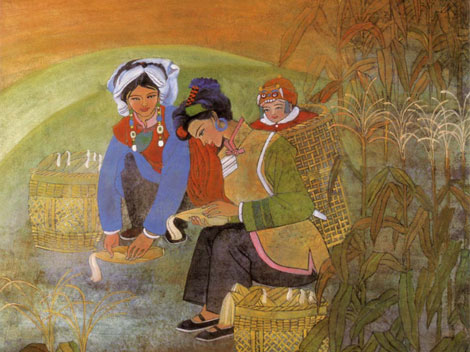
With a population of 27.123, the Nus, calling themselves "Nusu", "Anu" or "Along", mainly live in Lushui, Fugong, Gongshan and Lanping counties of Nujiang Lisu Autonomous Prefecture, Weixi County of Deqen Tibet Autonomous Prefecture of Yunnan Province and Zayu County of Tibet side by side with the Lisu, Drong, Tibetan, Bai, Han and Naxi people.
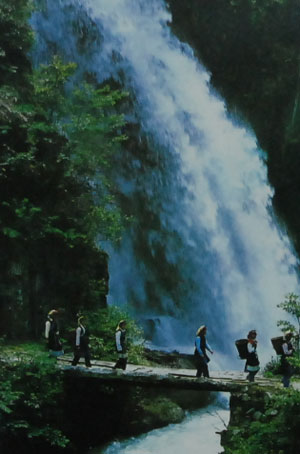
The great natural beauty of the Nujiang River Valley is really admirable. There are several waterfalls like this one in the valley.
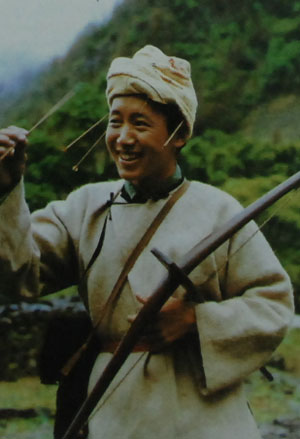
Bows and arrows accompany a man throughout his life.
The Nu language, having no written form, belongs to the Tibeto-Burman group of the Sino- Tibetan family with such a distinct diversity of local dialects, (hat different tribes among the Nus can hardly communicate with each other. But, the Lisu language is common among the Nus, because they have lived for centuries near the Lisu people.
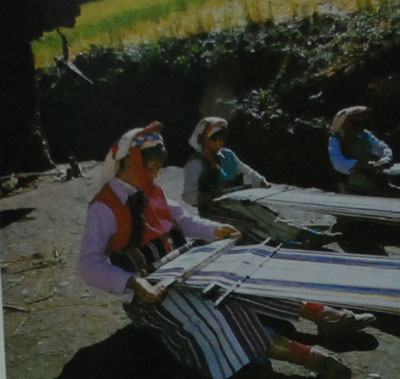
The Nu women's straight skirt is woven in this way.
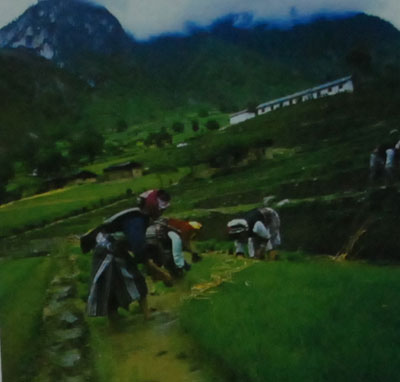
Pulling up rice seedlings tor transplanting.
The Nu Nationality is one of the oldest ethnic groups in the Nujiang and Lancang River area. Rapid rivers, jagged mountains, high peaks, roaring waterfalls and lush trees and bamboo together form the great natural beauty of this area, which is quite favorable for tourism. However, this beautiful land, cut off by mountains and river, is poor and quite difficult to access. Social progress among the Nus was deterred. Before the founding of new China, their society remained at the primitive stage. Slash-and-bum farming was prevalent. They simply recognize seasons by flowers, keep track of time and send massage by typing knots in rope and making notches on wood. Though the living conditions are difficult, the Nus are by nature diligent and brave. Their unceasing straggle with nature will surely bring this beautiful land a bright future.
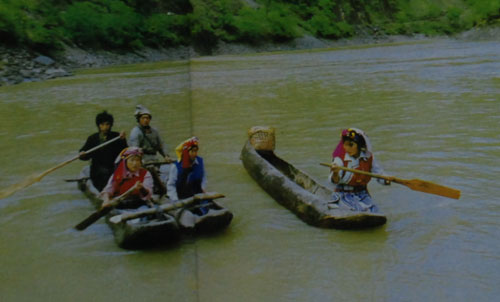
Canoes have been used by the Nus tor generations.





